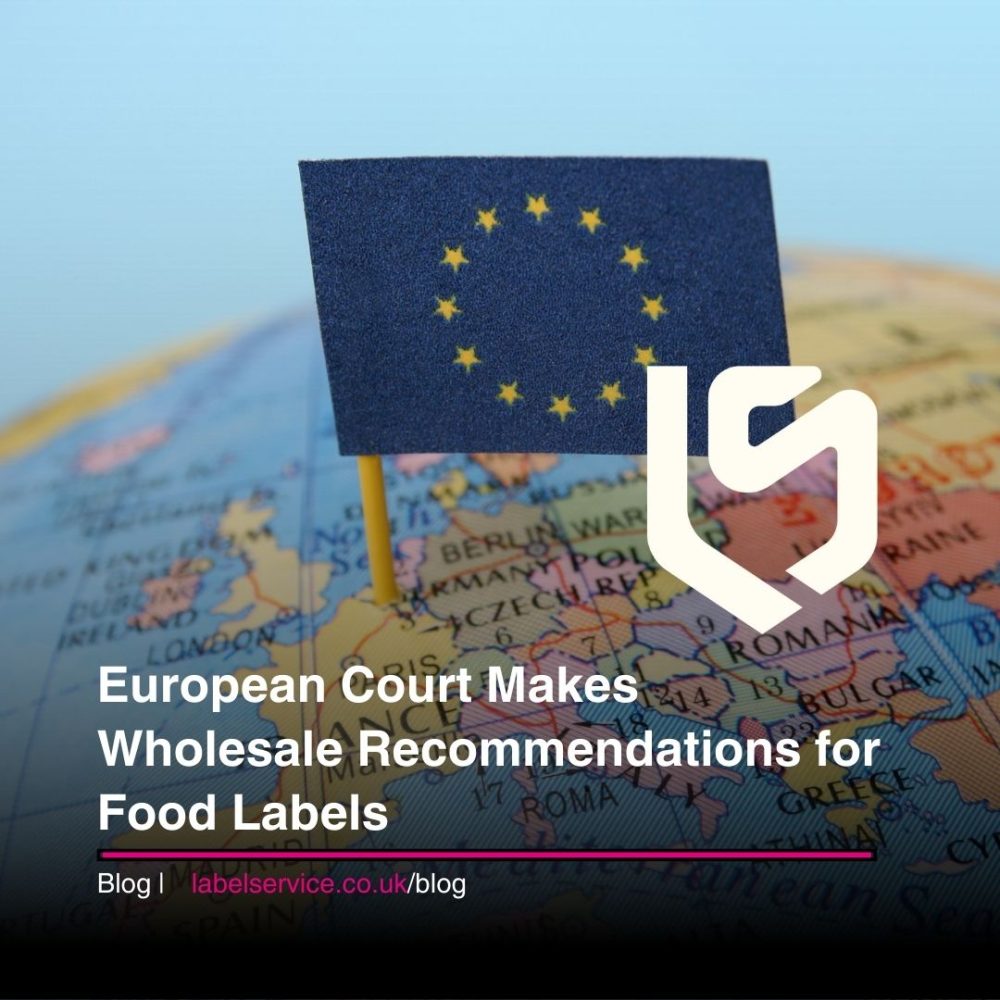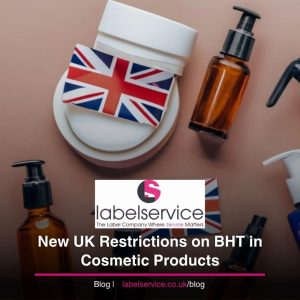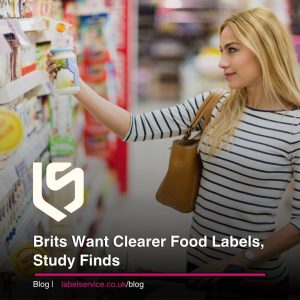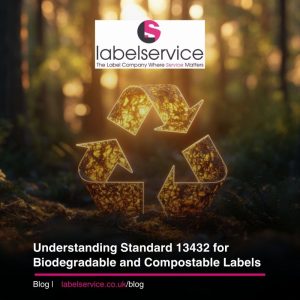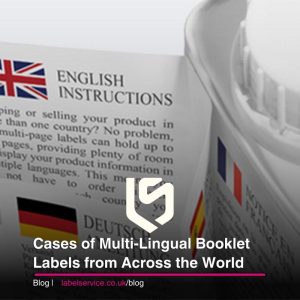Food labels are confusing consumers and misleading them with false claims, according to a new report by the European Court of Auditors (ECA). “Companies can be very creative in what they put on packaging, and EU rules have not caught up with a constantly evolving market,” explained ECA member and the audit’s lead Keit Pentus-Rosimannus. “[…] there are hundreds of different schemes, logos and claims that people need to decipher,” she added.
The extensive review noted that the essential information is there, including ingredient lists and identification of allergens, but updates and promised reviews are out of kilter with some of the claims food companies are making. Gaps have emerged allowing greenwashing to spread, for example, and for foods classified as high in fat, salt or sugar (HFSS) to also carry beneficial health claims. “EU legislation can lead to consumers being fooled,“ the ECA wrote.
NGOs including the European consumer rights organisation Foodwatch – which was interviewed by the ECA for its report – welcomed the findings as “a validation of the demands for transparent, honest and comprehensible consumer information it has voiced for years”. Food labels “shape [the] eating habits of millions of people and therefore have a massive impact on the health of European consumers”, added Suzy Sumner, head of the Brussels Office for Foodwatch International, as she called for the promised updates to the Food Information to Consumers (FIC) regulation.
The 2011 FIC Regulation is one of a set of rules on food information, which also include laws setting out the requirements for specific food products (wine, eggs, honey, olive oil, and food intended for young children, for example). Mandatory information includes the name of the food, ingredients and allergens, as well as origin labelling and nutrition declarations. The focus is on health and safety.
The FIC harmonised existing rules and strengthened the food labelling requirements across member states, but many of the deadlines for updated rules have long since passed. The European Commission should have taken action on 11 topics across the FIC and the 2006 claims regulation, but has only managed to achieve four of them.
Most notable and controversial of the missed deadlines is the one relating to front-of-pack nutrition labelling. NGOs, many scientists and some political alliances see them as a critical part of efforts to tackle growing disease rates. The harmonisation of these labels across the bloc has been the subject of heated debate for years, however.
Currently, there is more confusion than ever about the fate of NutriScore – the approach that appeared to be the front-runner as an EU-wide mandatory front-of-pack labelling scheme. Olivér Várhelyi, the health commissioner designate, offered only vague responses in relation to food labelling in his written answers to MEPs recently. The message was that work should continue on food labels but through non-legislative measures.
There are also worrying signs from the food industry. Danone has for example removed the NutriScore from all of its products following an algorithm update that gives some of its sweetened drinks a worse score. “We expected better from a company like Danone, which until recently campaigned to make NutriScore mandatory in Europe until the update (quite rightly) affected some of its flagship products,” Serge Hercberg, professor of nutrition at Université Paris, who led the team of researchers that created NutriScore, told Ingredients Network in September.
The ECA report is seen as a potentially important intervention, calling for a harmonised approach and for the Commission to up its game to help consumers make better-informed decisions. “The Commission needs to either propose NutriScore as the harmonised and mandatory label across the EU or clear the way and enable member states to introduce a mandatory NutriScore on the national level”, said Sumner at Foodwatch.
Dominic Watkins, head of consumer sector at law firm DWF, said: “The general takeaway from the report appears to be that if there is not harmonisation then there is an issue. That does not necessarily follow. There are increasing amounts of information on pack,” he added, “but provided that the mandatory information meets the legibility standard in the law, it is up to the [food business] what it does [in relation to] voluntary information. That information does not need to be there”.
Environmental claims, including the use of carbon footprint labels or images of grazing cows, have also spread quickly across supermarket shelves as brands look to sell their sustainability stories to increasingly eco-conscious consumers. In a Commission study, 80 % of the webshops or food product advertisements included eco-claims. However, the Commission has also found that more than half of green claims by companies in the EU were vague or misleading, and 40% were completely unsubstantiated.
New laws under the green claims and empowering consumers for the green transition directives are looming to clamp down on such claims. This includes the evidence needed to make such claims (another point on which there is intense debate).
There is some support for integrating environmental impacts with nutritional information in a more holistic front-of-pack ‘ecoscore’. This would seem “ideal” but would not be easy, as Rabobank senior consumer foods analysis Julia Buech explained. The single label “could liberate consumers from a dizzying array of labels/claims and bring the ultimate convenience of curation. It could also solve the (hypothetical) issue where consumers may need to choose between health (for example NutriScore A) and the environment (ecoscore E),” she said. “But that’s all still up in the air. For the moment, cracking on with NutriScore – or another FOPNL – while controversial, would indeed be a good starting point.”
Watkins said the ECA report provides a neat “shopping list” for the new Commission to determine its first steps and resurfaces the debate about nutrient profiles – and specifically if it is misleading to have a health and/or nutrition claim on a product that is also high in sugar.
Clear and Concise Labelling
When it comes to food labelling, the information must be clear and concise, providing the consumer with mandatory information about the contents and characteristics of the food product at a glance. We discuss the recent report from The European Court of Auditors (“ECA”), the European Union’s external auditor, to the European Commission. In this report, the shortcomings on European food labelling practices are highlighted and recommendations are provided.[1]According to the ECA, with a growing interest in food information on the one hand, and with the EU legal framework being incomplete on the other hand, there is room for improvement to help consumers understand food labelling better. This report provides companies active in the Food & Beverages industry interesting insights in the functioning of the current legal framework and possible focus points of the European Commission in the future.
Food labelling has become increasingly important. First of all, food labelling has to provide the consumers with the necessary information regarding the food products. However, labelling is also used to provide information to satisfy the growing interest of consumers in health and sustainability.
Furthermore, the broadened scope of food products for offer, and intensifying marketing practices have affected labelling practices. In the current market, with many different products on offer, it is important that consumers can rely on correct labelling for making well-informed decisions. The ECA examined whether food labelling according to the EU legal framework supports this, and assessed how consumers understand labels, and looked at control systems.
In their report, the ECA provides the following observations to the European Commission. Most importantly, the ECA identifies several gaps in the current legal framework. Secondly, the ECA concludes that the understanding of consumers of labels could be improved. Lastly, the ECA discusses the shortcomings of the current control systems of the Member States.
Following the ECA, although the EU legal framework overall provides sound basis for ensuring that consumers make informed decisions, there is certainly room for improvement. With the implementation of the FIC Regulation in 2014 (Regulation (EU) No. 1169/2011 of the European Parliament and of the Council of 25 October 2011 on the provision of food information to consumers) and the Claim Regulation in 2007 (Regulation (EC) No. 1924/2006 of the European Parliament and of the Council of 20 December 2006 on nutrition and health claims), the Commission could not sit back. To the contrary, both regulations required the Commission to take action on 11 defined topics for food labelling by publishing reports, implementing legal acts or making legislative proposals.
According to the ECA, by September 2024, the Commission has only succeeded in fulfilling work on 4 of these topics, namely trans fats, the presence of gluten, country of origin and alcoholic beverages. For some topics, the Commission commenced actions, but this is still ongoing (health claims, nutrient profiles, front-of-pack nutrition labelling, precautionary allergen labelling), whilst for other topics no action has been undertaken at all (legibility, food for vegetarians or vegans, reference intakes for specific population groups).
Because the absence of legislation on these 7 out of 11 topics, there are gaps in the legal framework regarding food labelling. This results in consumers being limited in making informed decisions. Furthermore, since the EU legal framework is incomplete, some national legislators try to fill in the gaps. The ECA explains that this leads to inequity across the European Union in consumer access to certain information.
The ECA came across certain practices of food & beverage companies that may be in violation of Article 7 FIC Regulation, which sets out the obligation to provide information on the food labelling that is accurate and easy to understand, and not misleading, ambiguous or confusing. These practices, related to food labelling, include uncertified qualities (e.g. ‘fresh’ or ‘natural’), misleading product names (using ‘meaty’ to describe meat products), or omitting relevant information (products being defrosted). Confronted with this information on the label (or missing from the label), consumers are unable to make an informed decision because their understanding of the label is incorrect.
What is more, the ECA concluded that consumers are exposed to a growing number of logos, certification marks, schemes and claims. The ECA refers to a 2013 study of the Commission, which showed that (even back then) there were 901 voluntary food labelling schemes, with a third of the surveyed consumers finding these labels confusing and another third finding them misleading.
Overall, the ECA concludes that although the current European legal framework provides an essential basis for food labelling requirements, it is still incomplete and sometimes insufficiently incorporated. This restricts the ability of consumers to make better-informed decisions.
In order to solve this, the ECA comes up with 5 recommendations for the Commission to implement by 2027. These recommendations are:
- Address the current gaps in the European legal framework for food labelling;
- Step up efforts to analyse labelling practices;
- Monitor consumer expectations and take action to improve their understanding of food labelling;
- Strengthen Member States’ checks on voluntary labels and online retail;
- Improve reporting on food labelling.
For companies active in the Food & Beverage industry, this report may provide an indication of the focus points of the Commission with regard to labelling for the next couple of years. It can be expected that both national supervision and enforcement will increase, and that the interest in compliant food labelling will only increase.


